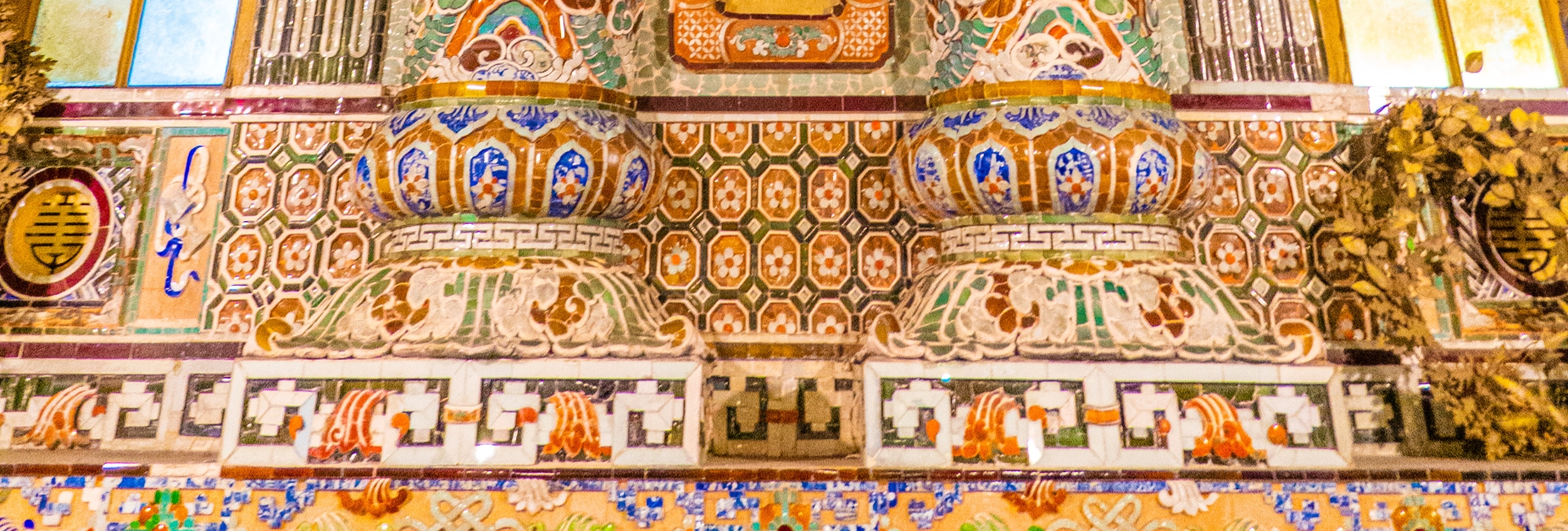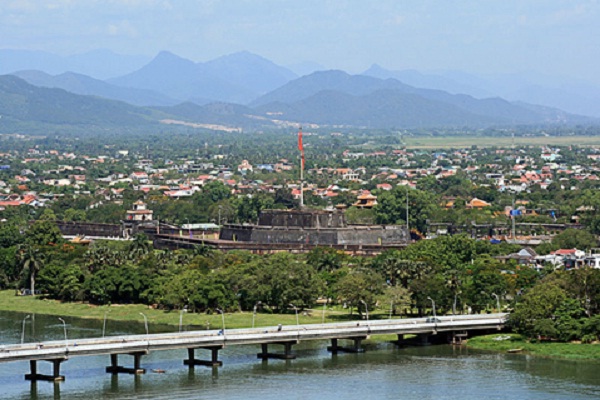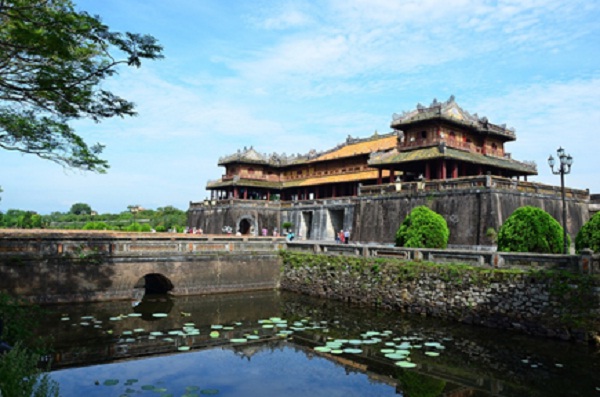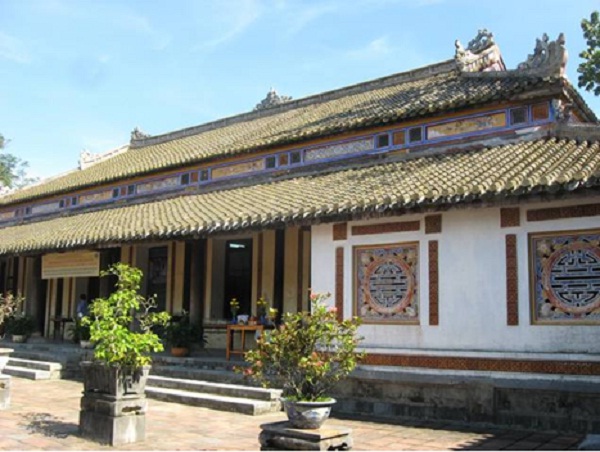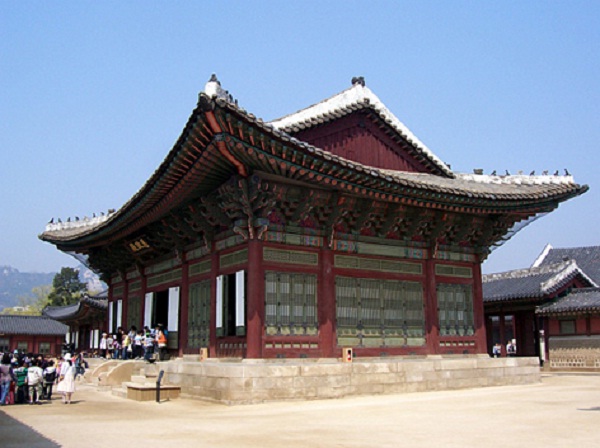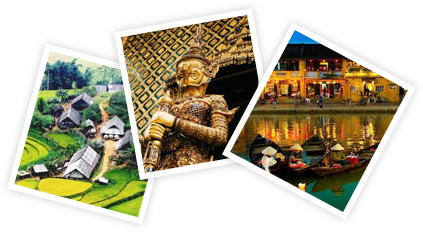Hue Imperial Citadel, a UNESCO World Heritage Site in Vietnam, is a mesmerizing historical marvel. With its grand architecture and rich cultural significance, it offers a captivating journey into the Vietnamese Royal past. Join Indochina Voyages as we explore its secrets and immerse ourselves in the splendor of this remarkable destination.
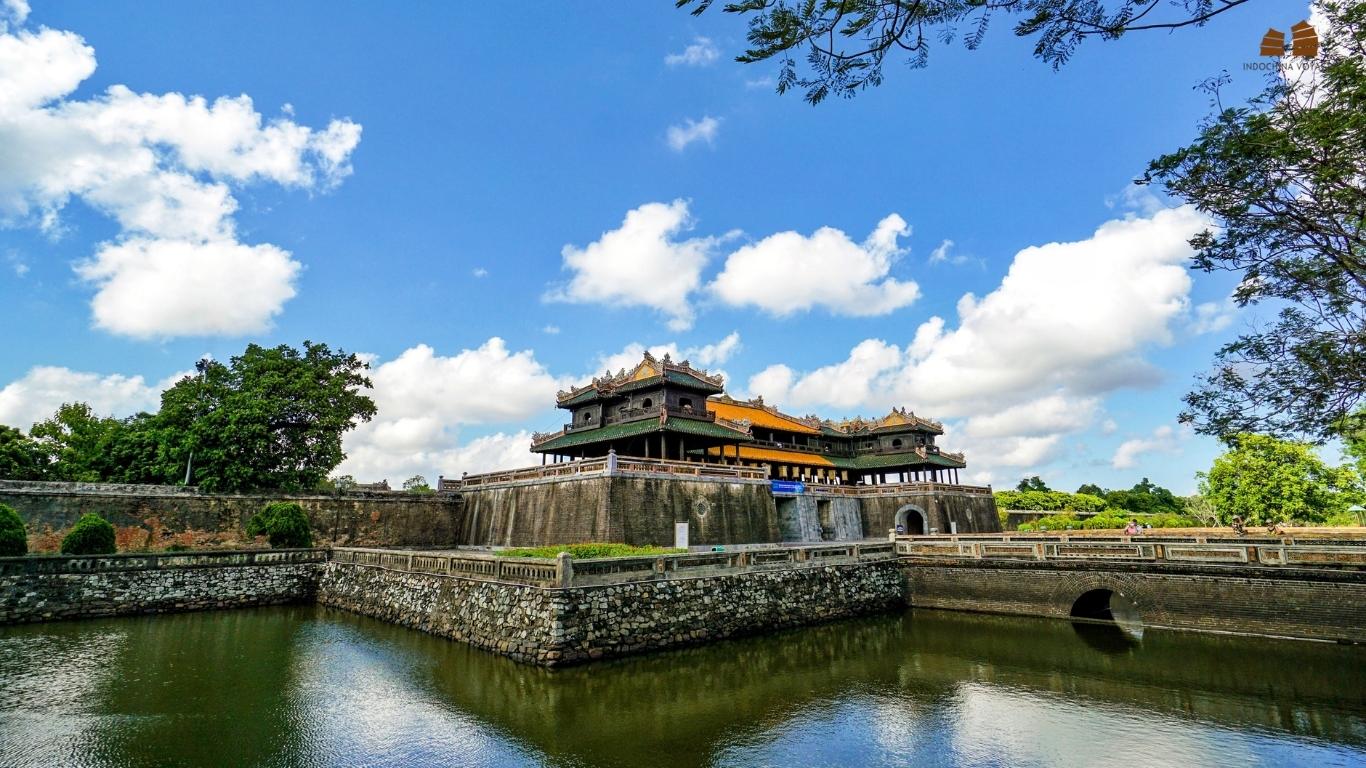
Getting to Know
The Citadel Complex of Hue is set up by Nguyen Dynasty and situated on the Northern bank of the Perfume River, covering an area of 520ha and comprising three circles of ramparts. Namely from outside to inside: Kinh Thanh Hue (Hue Capital Citadel), Hoang Thanh (Royal Citadel), and Tu Cam Thanh (Forbidden Citadel).
The Citadel’s sprawling complex is a testament to the grandeur of Vietnamese architecture. Enclosed within its fortified walls, you’ll discover a harmonious blend of traditional Vietnamese and French colonial influences.
History
The origins of the Hue Imperial Citadel can be traced back to the early 19th century when Emperor Gia Long, the first ruler of the Nguyen Dynasty, decided to establish a new capital for Vietnam. The site chosen was along the banks of the Perfume River. Which is strategically located between the mountains and the sea. Construction of the Citadel began in 1804 and continued for over 30 years.
Inspired by the architectural traditions of the Forbidden City in Beijing, China, the Hue Imperial Citadel was designed as a fortified complex with a series of concentric walls and moats. The construction incorporated both traditional Vietnamese and French influences, creating a unique blend of styles.
The Citadel’s development reached its peak during the reign of Emperor Minh Mang in the early 19th century. Under his rule, the complex underwent significant expansions and enhancements, including the construction of the Forbidden Purple City, an inner sanctum exclusively reserved for the royal family.
Tragically, the Hue Imperial Citadel suffered extensive damage during the Vietnam War, particularly during the Tet Offensive in 1968. Many buildings were destroyed, and the Citadel fell into disrepair. However, efforts to preserve and restore this historic site began in the 1980s, and significant restoration work has taken place since then.
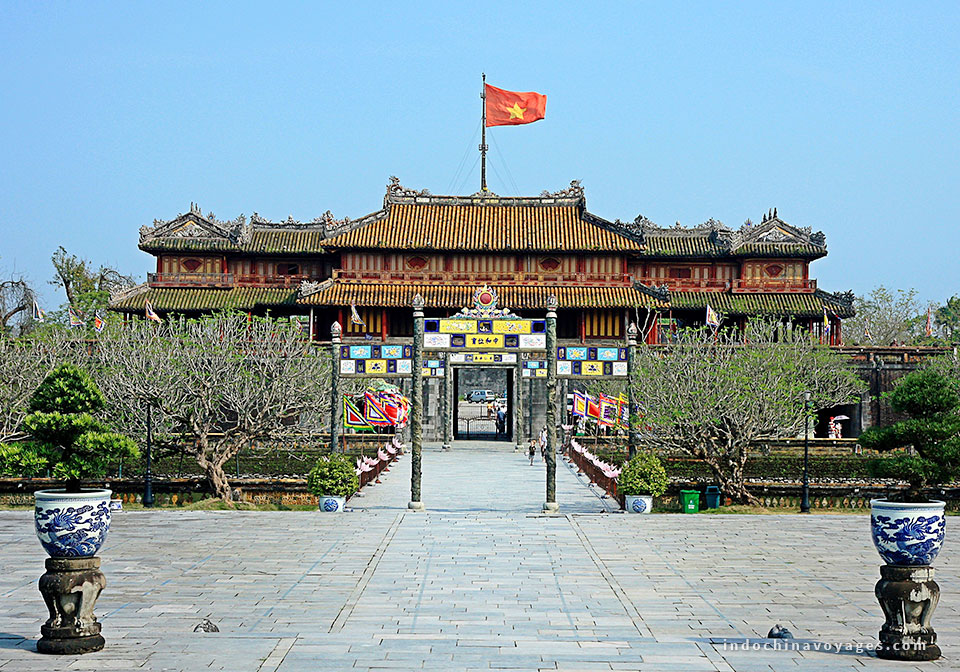
Today, visitors can witness the grandeur of the restored Hue Imperial Citadel, which was recognized as a UNESCO World Heritage Site in 1993. The complex comprises various sections, including the Imperial Enclosure, the Forbidden Purple City, and the surrounding gardens and temples. Each area offers a glimpse into the history, culture, and daily life of the Nguyen Dynasty.
The formation and development of the Hue Imperial Citadel stand as a testament to Vietnam’s rich heritage and architectural prowess. Its preservation and restoration efforts ensure that future generations can continue to appreciate and be inspired by this remarkable symbol of Vietnam’s imperial past.
Delving into the Hue Imperial Palace
The Hue Imperial Citadel is composed of various distinct parts that together form a complex and magnificent architectural ensemble. From outside to inside, you’ll have a journey respectively:
Kinh Thanh Hue (Hue Capital Citadel)
The first stop-over is The exterior circle of the Hue Imperial Citadel, known as Kinh Thanh Hue, which formed the border of the old capital city. It consists of a square-shaped wall system featuring 140 constructions, such as bastions and gates. With walls standing at 6 meters in height, 21 meters in thickness, and a circumference of nearly 10 kilometers, it served as a defensive barrier. Despite its moss-covered appearance, the citadel retains its original form and historical integrity.
Hoang Thanh (Royal Citadel)
Getting further into the second circle, we stop at Hoang Thanh, the most important part of the Citadel Complex. It is situated in the center of Kinh Thanh Hue, has a square shape of more than 600 meters long on each side, and is protected by a surrounding trench system.
There are 4 entrance gates to access this citadel. The most important gate, Ngo Mon Gate, was only reserved for the King in the past. Hoang Thanh is the place for the highest offices of Viet Nam’s feudalism and sanctums of the decreased Emperors to operate and is divided into various sections like a palace for grand ceremonies, shrines of the Emperors, a storehouse for precious objects, a workshop for manufacturing useful articles, studying place for princes, and more.
Tu Cam Thanh (Forbidden Citadel)
Our final destination, after passing through Hoang Thanh, is Tu Cam Thanh. This complex comprises around 50 structures of varying sizes where the Emperor and his family conducted their daily activities. Among them are Can Chanh Palace for official work, Can Thanh as the private palace, Khon Thai Residence for the Queens, Duyet Thi Duong House serving as the royal theatre, Thuong Thien as the kitchen, and Thai Binh Lau as the Emperor’s reading room. Surrounded by brick walls with 7 entrance gates, the front side features Dai Cung Mon, exclusively reserved for the Kings.
What to experience?
While the Citadel has witnessed the ravages of time and wars, extensive restoration efforts have preserved its splendor. Today, visitors can immerse themselves in the rich history and cultural heritage of Hue through various activities and attractions.
Hue Royal Antiquities Museum
Start your journey at the Hue Royal Antiquities Museum, which houses a remarkable collection of artifacts, royal costumes, and historical relics. Gain deeper insights into the life of the Nguyen Dynasty and appreciate the treasures that have withstood the test of time.
Traditional Performances and Cultural Shows
Enhance your experience by witnessing traditional performances and cultural shows within the Citadel. From captivating traditional music performances to mesmerizing royal dance routines, these cultural displays offer a glimpse into the vibrant heritage of Hue.
To make the experience even more immersive, visitors have the opportunity to participate in cosplay as the king or queen. By donning royal attire, visitors can delve deeper into the historical ambiance, gaining a deeper appreciation for the roles and responsibilities of the royal court.
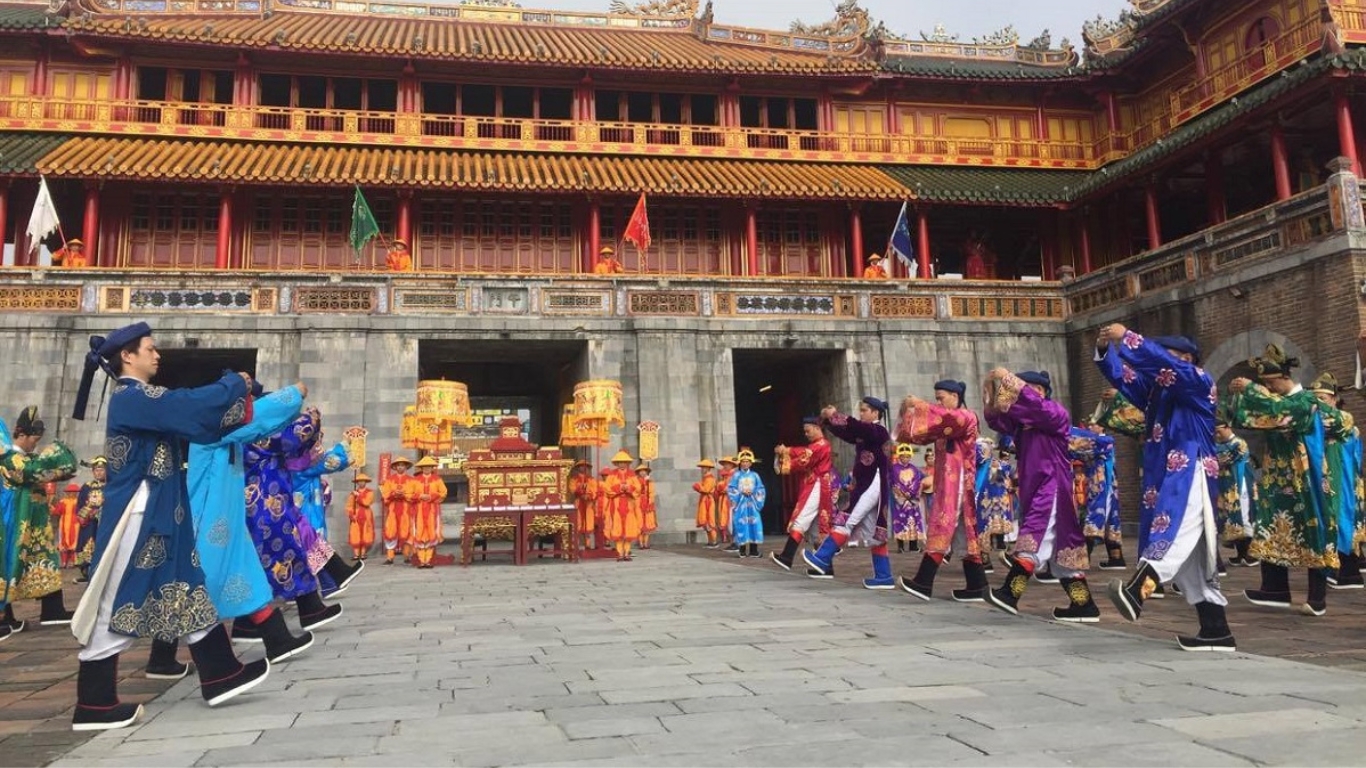
Exploring the Citadel by Electronic car or on Foot
Uncover the Citadel’s hidden corners and architectural wonders by embarking on a leisurely electronic car ride or a guided walking tour. As you meander through the narrow alleys and splendid gardens, you’ll encounter hidden temples, tranquil ponds, and exquisite stone bridges, each revealing a piece of Hue’s captivating story.
Helpful Information for visitors
To make the most of your visit to the Hue Imperial Citadel, here are some essential tips:
Opening Hours and Admission Fees
The Hue Citadel open time depends on the season:
- Summer: From 06:30 to 17:30
- Winter: From 07:00 to 17:00
The admission fee is VND 150,000/person (about US $7/person)
Best Times to Visit and Avoid Crowds
To avoid large crowds, plan your visit during weekdays or early mornings. The cooler months from October to March are also an ideal time to explore the Citadel, as the weather is more pleasant.
How to get there?
Being located near the center of Hue city, travelers can choose from a range of transportation modes such as bicycles, cyclos (pedicabs), taxis, or motorbikes.
To access the Hue Imperial Citadel from the city center, the recommended route is to follow the south bank of the Perfume River. Pass through either Truong Tien Bridge or Phu Xuan Bridge, and continue along Bach Ho Street. Then, proceed onto Quang Duc Street, which is the fastest and shortest route. This journey takes just a few minutes, making it convenient for travelers with limited time.
Another Travel Tips
Besides, you can read these travel tips below to ensure a memorable and enjoyable visit to the Hue Imperial Citadel:
- Wear comfortable footwear: The Citadel complex is vast, and you will be doing a lot of walking. Choose comfortable shoes to explore the site without discomfort.
- Bring sun protection: The climate can be hot and sunny, especially during summer. Don’t forget to bring sunscreen, a hat, and sunglasses to protect yourself from the sun.
- Stay hydrated: Carry a water bottle with you to stay hydrated throughout your visit. There are also refreshment stalls and cafes within the Citadel where you can purchase drinks.
- Hire a local guide: Consider hiring a knowledgeable local guide who can provide historical and cultural insights, enhancing your understanding of the Hue Imperial Citadel.
- Respect the rules and heritage: The Hue Imperial Citadel is a UNESCO World Heritage Site, so it’s important to respect the rules and regulations. Avoid touching or climbing on historic structures and artifacts.
- Allow ample time: The Citadel complex is extensive, and there is much to see and explore. Allocate enough time to fully appreciate the various sections, palaces, temples, and gardens within the site.
- Experience local cuisine: After your visit, indulge in Hue’s renowned cuisine. Sample local specialties such as bun bo Hue (spicy beef noodle soup) and other delicious dishes at nearby restaurants or street food stalls.
As we conclude our virtual journey through the Hue Imperial Citadel, we hope this blog has ignited your wanderlust and deepened your appreciation for Vietnam’s rich history. Indochina Voyages invites you to embark on a personalized adventure, where our expert team will craft an unforgettable itinerary that includes the wonders of the Imperial City of Hue. Let us guide you through this captivating destination, where the echoes of the past still resonate in every stone and courtyard!
From Indochina Voyages Team

